- Home
- Abstract Art
What is Abstract Art?
What is abstract art and how can we use it in our own work?
Feel like dipping your toe into 'abstract' waters? Take a look at the examples on this page to see what it's all about.
But first - would you think of Vincent van Gogh as an abstract artist?
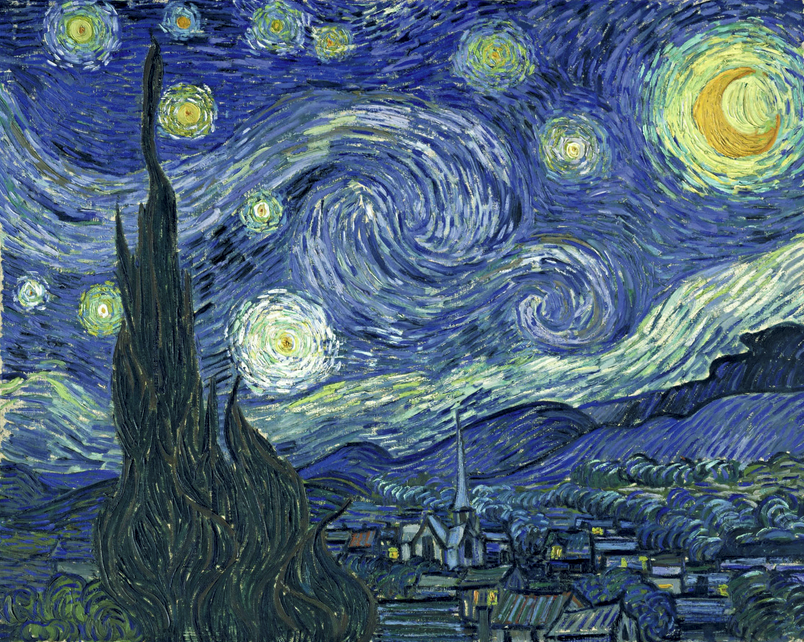 "The Starry Night", Vincent van Gogh 1899
"The Starry Night", Vincent van Gogh 1899At first sight Van Gogh's "The Starry Night" doesn't look very 'abstract', but here we can see the change from realism to abstraction in Western art starting to happen.
He makes no attempt to paint a real night sky, but is expressing what he felt when he gazed up at the stars.
He said, " I want to paint what I feel, and feel what I paint."
However, he is still representing the real world, although very loosely, so we could call this painting partially abstract.
Fauvism
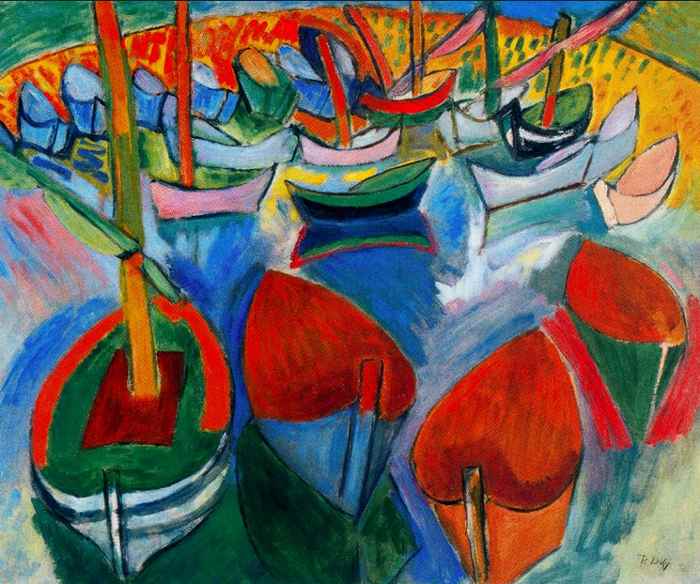 "Boats at Martigues", Raoul Dufy c.1908
"Boats at Martigues", Raoul Dufy c.1908After Van Gogh came Fauvism ('Les Fauves' - the movement dubbed 'Wild Beasts' by a critic of the time!)
For this painting, Raoul Dufy uses a harbour view for his starting point.
Freed from the constraints, as he saw it, of realism, we can feel his enjoyment as he uses exuberant, primary colors, and delights in the pattern of the boat shapes.
Not concerned at all in trying to make his work look realistic, he said,
"Art is not what you see, but what you make others see."
And we do see what he loved about that view, don't we!
Cubism
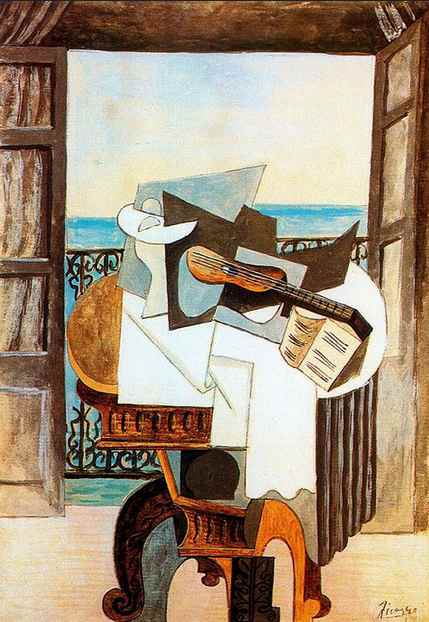 "Table in Front of Window", Pablo Picasso 1919
"Table in Front of Window", Pablo Picasso 1919In another further step away from realism, Picasso started experimenting with Cubism.
In his painting, "Table in front of Window" he takes apart all the forms of table and still life objects - looks at them from different views and perspectives, then arranges them all together again in one image.
He said, "I paint what I think, not what I see."
Interesting!
However, Picasso was still basing his work on objects from the the real world.
But meanwhile, what was happening elsewhere?...
Wassily Kandinsky and Piet Mondrian were happening, that's what!
Pure Abstraction
 "Yellow-Red-Blue", Wassily Kandinsky 1925
"Yellow-Red-Blue", Wassily Kandinsky 1925One of the pioneers of pure abstraction in Western art, Kandinsky ditched any relationship to realistic objects.
He loved music, and felt color was like notes in a musical composition - just as each note had its effect in music, each color had its own effect in a pictorial composition.
He said, "The observer must learn to look at the picture as a graphic representation of a mood, and not as a representation of objects."
There is a difference in mood from the right side to the left in the above work, don't you think?
 "Composition with Red, Blue and Yellow", Piet Mondrian 1930
"Composition with Red, Blue and Yellow", Piet Mondrian 1930Mondrian began as a naturalistic painter but gradually pared down his work to what he considered essentials - primary colors, black, white, grey, and vertical and horizontal lines.
To him, these essentials expressed spiritual values.
He said,
"I, too, find the flower beautiful in it's outward appearance. But a deeper beauty lies concealed within."
Action Painting
 "Number 2", Jackson Pollock 1951
"Number 2", Jackson Pollock 1951Next comes 'Action Painting' - invented by Jackson Pollock.
He lays the large canvas on the floor, crouches, walks round it, and seeing it from all angles, splashes, drips, throws, and pours liquid paint onto it to get the effect he wants.
In the end, he was concerned that people would try to see hints of real objects in his work so he gave his paintings numbers instead of titles.
He said,
"If people would just look at the paintings, I don't think they would have any trouble enjoying them. It's like looking at a bed of flowers, you don't tear your hair out over what it means."
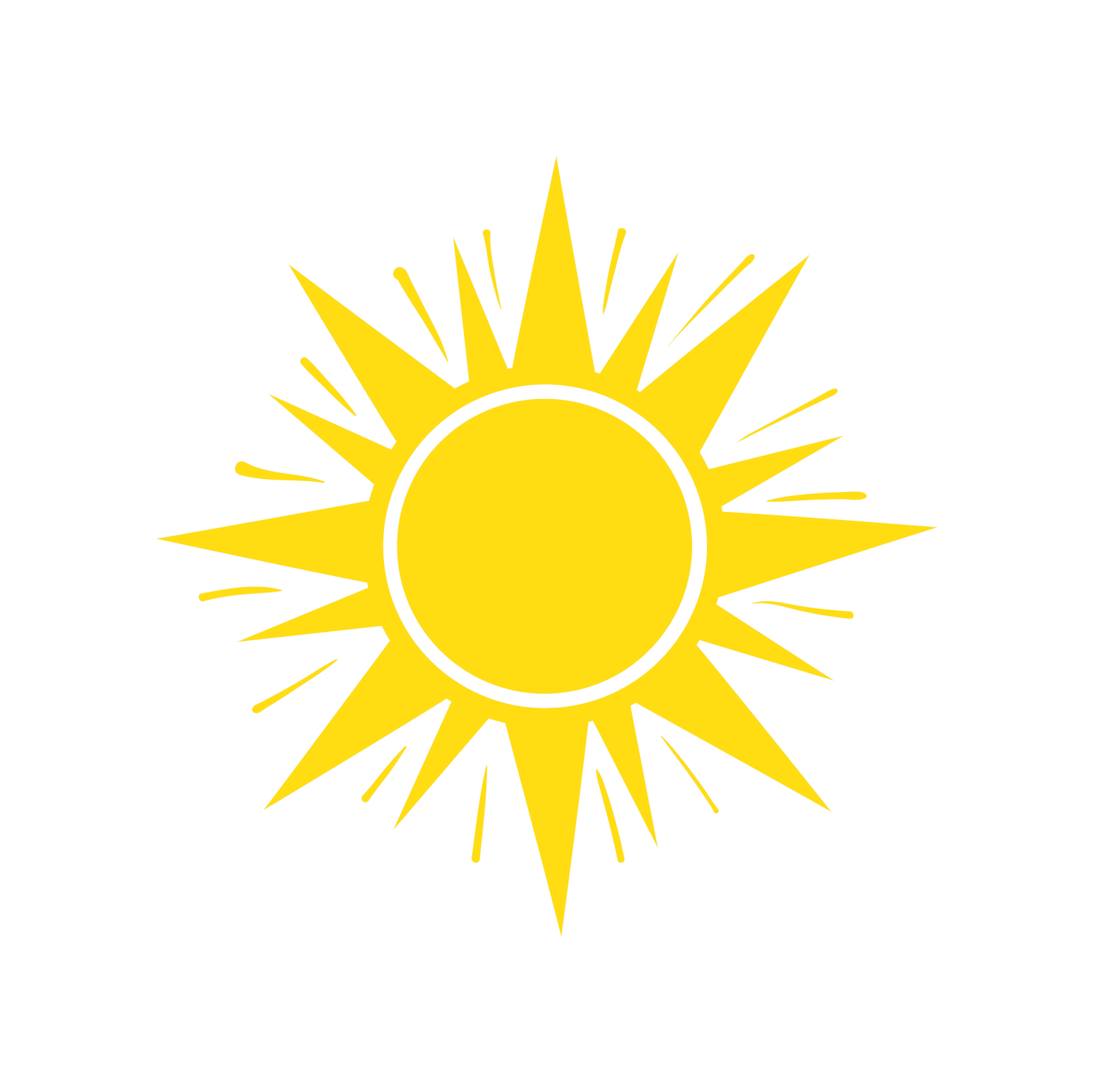
Quick tip:
Remember, the seven elements of art are essential in abstract work - we can't do without them!
(If you're not sure how they work, see all seven elements covered in detail on this website.)
Color Field
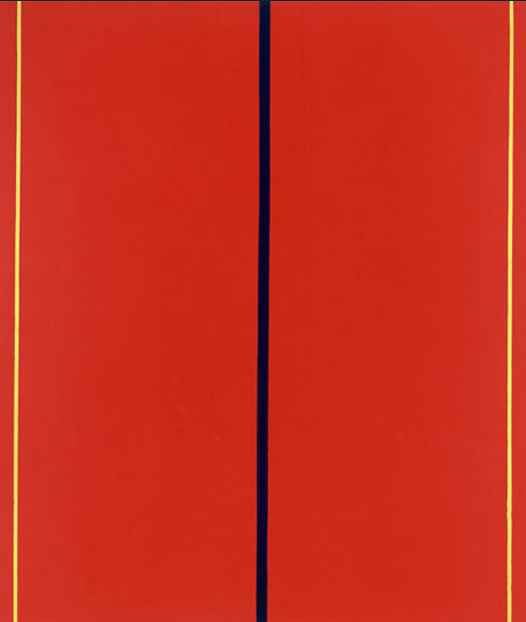 "Who's Afraid of Red, Yellow and Blue 11", Barnett Newman 1969-1970
"Who's Afraid of Red, Yellow and Blue 11", Barnett Newman 1969-1970This work by Barnett Newman is an example of 'Color Field' painting - and it's big! 10x8 feet (304.8x259.1 cm) and one of a series.
It's interesting to see how his use of primary colors, relates to paintings by Kandinsky and Mondrian with almost the same titles.
Three different artists - three different reasons for using the primaries!
Kandinsky felt that colors related to musical sounds.
Mondrian felt that his use of primary colors expressed the underlying spiritual nature of the physical world.
But Barnett Newman felt that colors shouldn't relate to anything else, and wanted to showcase and express the qualities of the colors themselves.
He said,
"I prefer to leave the paintings to speak for themselves."
And they certainly do! Those large areas of color have a huge impact when you are standing in front of them.
The series is on show at the Stedelijk Museum in Amsterdam.
More on the Element of Color in Art
What Happens Next?!
 Over to you!
Over to you!What happens next? You is what happens next!
We're temporarily pausing the abstract journey here, even though there are more abstract artists to explore - so now it's over to you!
Will you do a partially abstract work like Van Gogh or Dufy? Or a cubist still-life like Picasso?
How about pure abstraction like Kandinsky - maybe listen to some instrumental music first to spark you off?
Does Mondrian inspire you with his geometric shapes and primary colors?
Or imagine the impact of a large painting like Barnett Newman's showcasing your favourite colors!
Or will you kit yourself out in waterproofs and do some action painting!
So, what is abstract art? We now know one thing for sure - the abstract world is wide open. There are no restrictions, the only limit is your imagination.
So grab that sketch-book, and start thinking (or dreaming!)
Go for it - I dare you!
Like this page? Click on the icon to share it!